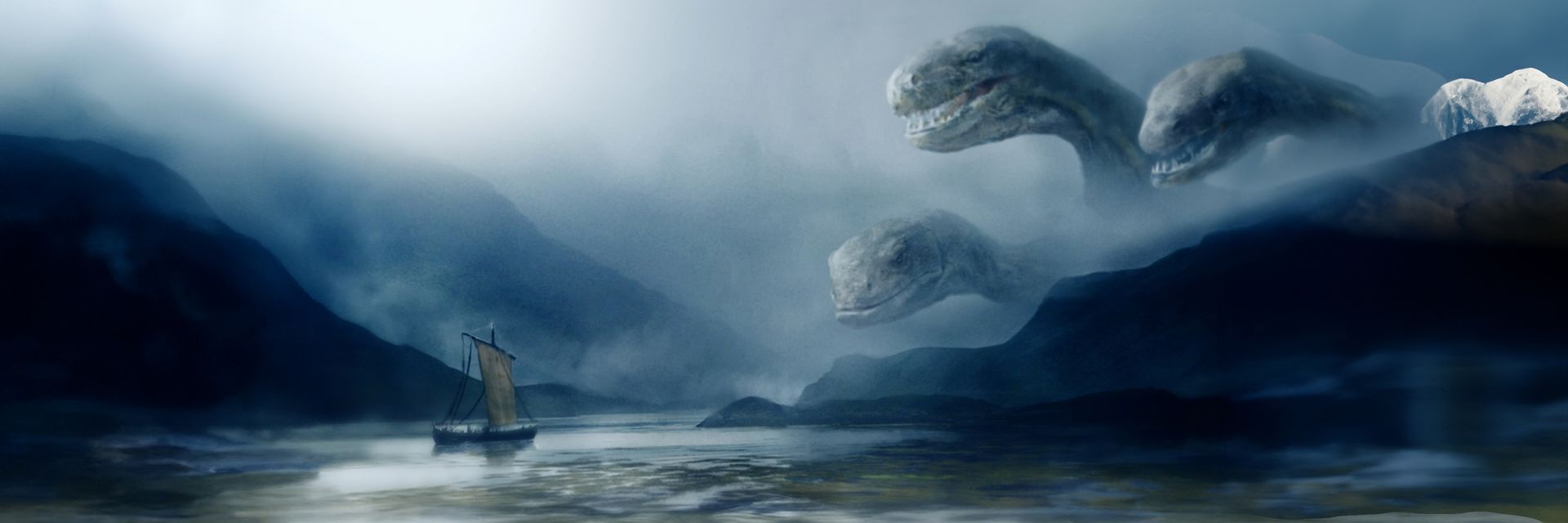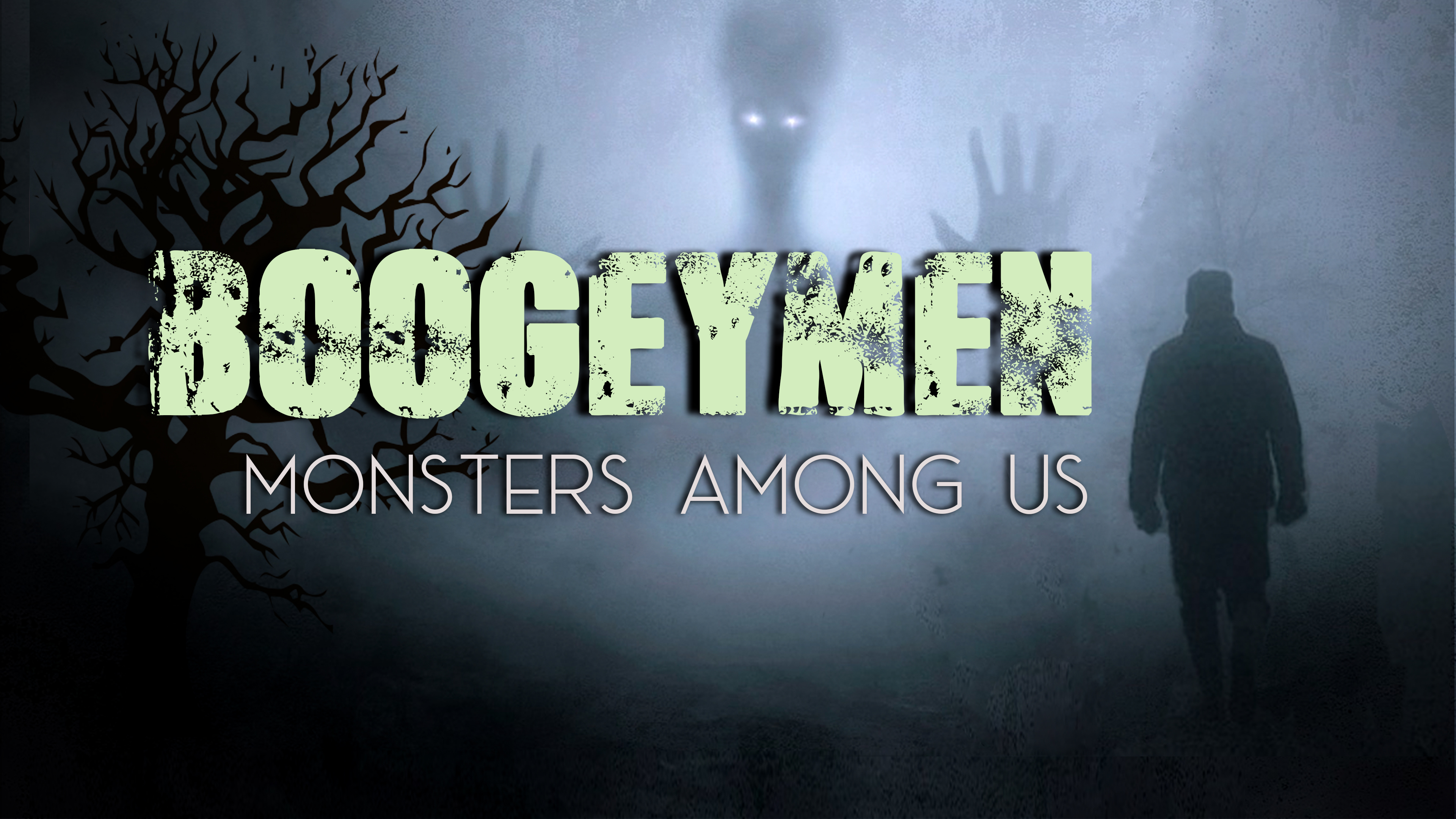The stories of mythical creatures have endured for millennia. How did they originate?
◊
We all know that unicorns live in enchanted forests. Bigfoot, Sasquatch, or Yeti inhabit mountainous, heavily wooded, or snowy regions. Mermaids and kraken make watery regions their home. Griffins, dragons, and hippogriffs fly through the air. Trolls, gnomes, and the Knockers all live underground. Indeed, it looks as if there is no place on Earth where mythical creatures don’t reside. How did so many fictions come to populate earth, air, water, and sky?
Spoiler alert! Our imagination creates all sorts of interesting things that don’t exist in nature. We tell stories that explain what those things are, what they do, and why they do it. Sometimes, they seem as real as the creatures that actually do share the planet with us. I mean, what seems stranger, a magnificent winged horse called Pegasus or a duck-billed, egg-laying mammal called a platypus?
Our need to make sense of experience is one explanation of mythical creatures. For example, in 1493, Christopher Columbus likely saw some manatees near Haitian waters. He thought they were mermaids, though not nearly as attractive as those depicted in paintings. Not having had experience with manatees, but having seen at least one image of a mermaid, it apparently seemed reasonable for Columbus to file the former under the latter (with an attractiveness qualifier).
Shaping our beliefs is another way to explain such entities. Small children are kept in line quite nicely at Christmastime by stories about scary creatures. Iceland’s Jólakötturinn is a terrifying cat that eats children who don’t finish their chores, and Germany’s Krampus, who is half-demon and half-goat, is at the ready to punish naughty kids.
Explore the tall tales of monsters that inhabit our collective imaginations in this MagellanTV series.
What separates myth from fact? Transliterated from the ancient Greek, muthos, and the mid-19th century Latin, mythus, a myth is a traditional story or folktale. As such, it’s a fiction. Like other fictions, however, a myth can be a powerful way to explain and understand ourselves and our world.
Human beings have had ample time to develop stories about mythical creatures roaming the land, lurking beneath the water, and soaring through the sky. A Komodo dragon becomes a fire-spitting monster. A rabid dog becomes a werewolf. An eel becomes a serpent.
The unusual becomes fantastic. The misunderstood becomes malign. Mythical creatures are bestowed with supernatural powers, which, when combined with ordinary human virtues and vices, become worthy of reverence or dread. All over the world, mythical creatures share various characteristics, and find their way into various art forms, architecture, and symbols. What is it that connects them? One answer is that their superpowers and origin stories are as diverse and astonishing as those of the heroes and villains of the Marvel Cinematic Universe. And they reveal important things about ourselves -- who we are, where we're from, how to live our lives. Let's meet some of them.
Mythological Creatures Roaming the Land
As an academic discipline, paleontology hasn’t been around for all that long – roughly since the 18th century. The fossil record, of course, has been around a lot longer. Ancient peoples would have come across – and tried to make sense of – animal bones. Could an elephant’s skull, for example, have been mistaken for a Cyclops, that one-eyed giant of Ancient Greek mythology? Maybe the hole from which a tusk emerged was an eye socket.
Sasquatch, Bigfoot, and Yeti
From the Pacific Northwest, including part of northern California and British Columbia, to the snowy Himalayas of North Asia, people have sighted an enormous humanoid or human/non-human primate hybrid. Sasquatch (“hairy man”), is thought to have originated with the Coast Salish indigenous peoples of the Pacific Northwest. The supernatural shapeshifter is said to protect both the land and the people.
In the late 1950s, a northern California man made casts of enormous footprints he found on his property. Given the existing beliefs about Sasquatch, it was not a stretch for the legend of Bigfoot to really take off. Before then, settlers in Oregon and miners on Mount St. Helens told stories about seeing or being attacked by a wild man or a big ape.
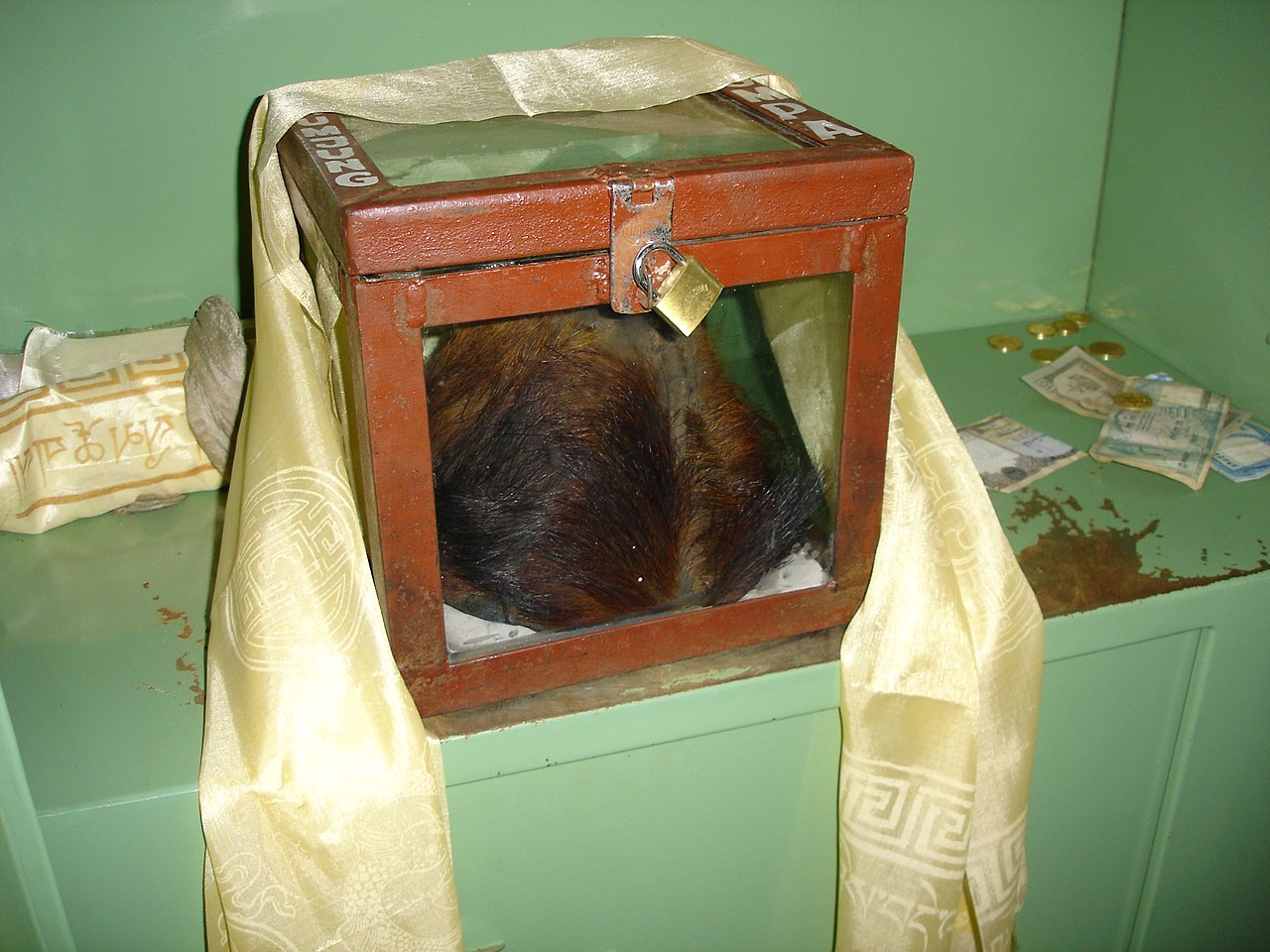
Purported Yeti scalp at Khumjung monastery (Credit: Nuno Nogueira, via Wikimedia Commons)
The Yeti is distinct from Sasquatch, not only because it lives in an arctic climate, but also because it’s considered more a man-bear than an ape-man. What’s curious about that distinction, however, is the fact that a now-extinct species of ape, Gigantopitchacus blacki, lived in what is now southern China. Rather than a “man-bear,” wouldn’t a giant man have been a more likely connection? Maybe, but like so many origin stories, it is a mixture of experiences, traditions, and time.
Mythological Creatures Lurking in the Water
Ancient Greek thinker Thales (c. 624-545 BCE) held that nature is fundamentally water. Water makes things grow and sustains life. Most of our planet is covered by water. You and I spent almost nine months suspended in watery fluid. In short, water is profoundly important.
Mami Wata, Mermaids and Mermen, and Sirens
A human’s torso ends in a fish’s or serpent’s tail. This description is common to a number of traditions around the world, owing partly to the voluntary and imposed intermingling of cultures. In parts of West Africa, Central-West Africa, and the Caribbean, Mami Wata (Mother Water) is a spirit reflecting both the benefits and hazards of water. Water provides resources, like fish, and opportunities for trade, but it is also dangerous during events like floods and as a route for invaders.
When European explorers and traders arrived at what is now Sierra-Leone, Benin, and Nigeria, features of Mami Wata fused with accounts of mermaids, the latter of which were often carved on the prows of boats. People in Haiti and the Democratic Republic of Congo call Mami Wata “La Sirene,” after the ancient Greek myths in which bird women seduced sailors with their songs. (Recall the scene from Homer’s Odyssey in which Odysseus orders his men to tie him to the ship’s mast, knowing he will be overwhelmed by the Sirens’ songs.)
The slave trade that forced the African diaspora from the 15th to the 19th centuries also spread Mami Wata. Unsurprisingly, the deity is a complex symbol, embodying an array of emotions and attitudes, representing myriad challenges and opportunities, and can even take on aspects of a Christian saint, Muslim mystic, or Hindu deity – all without losing her identity.
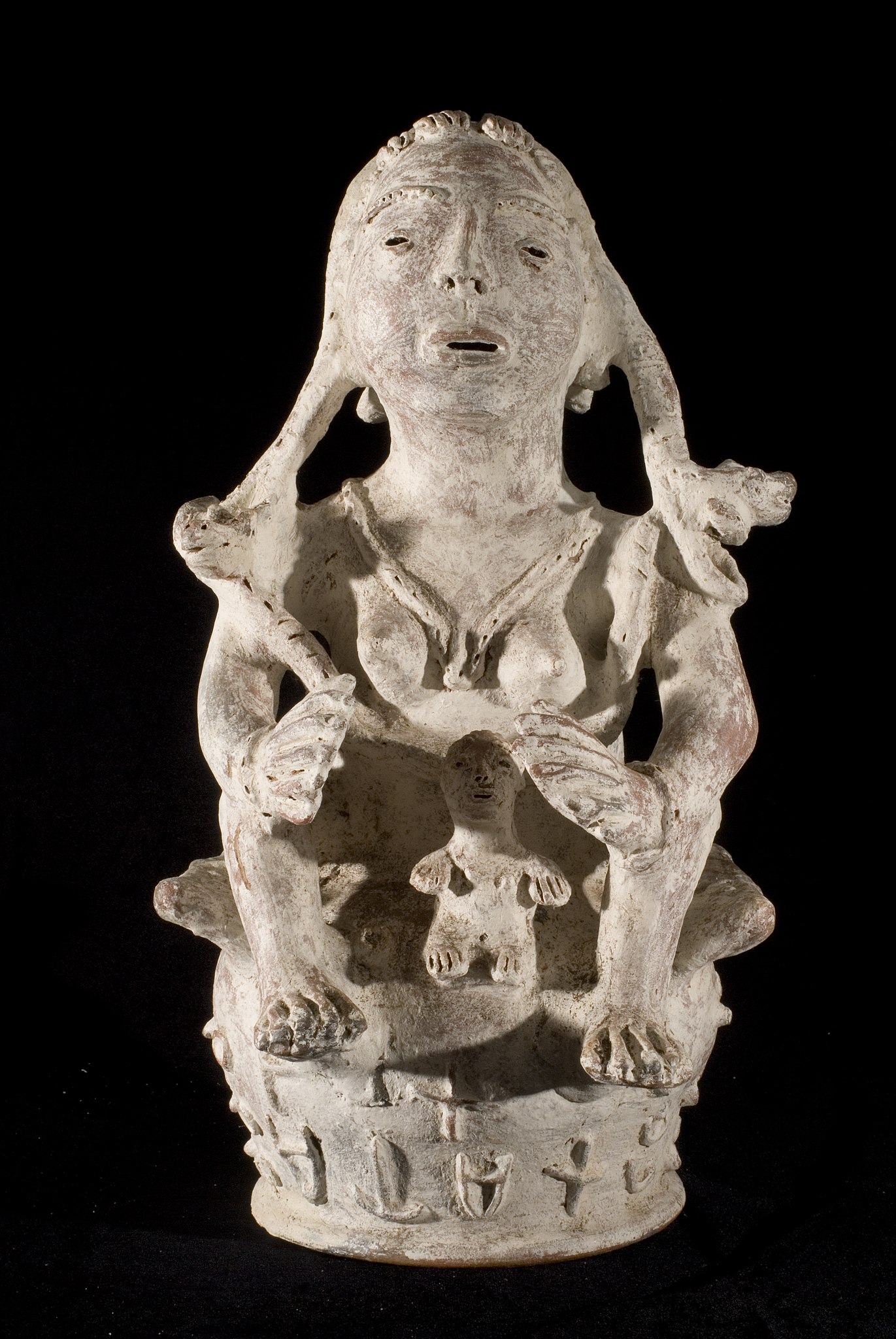
Mami Wata sculpture from the Ewe people of Ghana (Credit: FundacionArrelanoAlonso, via Wikimedia Commons)
From Slavic culture’s male and female water spirits, voydyanoys and rusalki, to Southeast Asia’s water princess Suvannamaccha (golden fish), some version of merpeople has been around for millennia. The Assyrian goddess, Atargatis, for example, dates back over 3,000 years. Some accounts have the goddess diving into a lake from despair, after having accidentally killed her husband. Others have her saved by fish after falling into a lake. In any case, her bottom half transformed into a fish. Similar legends may go as far back as Oannes, the Mesopotamian male fish god from 5,000 years ago.
Naitaka and the Loch Ness Monster
Though separated by oceans, the Naitaka and Loch Ness Monster are lake-dwelling serpent-like creatures. Naitaka is said to swim the Okanagan Lake in British Columbia, Canada. For thousands of years, First Nations peoples, the Secwepemc and Syilx, told stories about the water spirit that protected the water systems in the lake’s valley. A spirit manifested in physical form – sometimes with a horse’s head and deer-like antlers – Naitaka is a reminder to respect water’s sacredness.
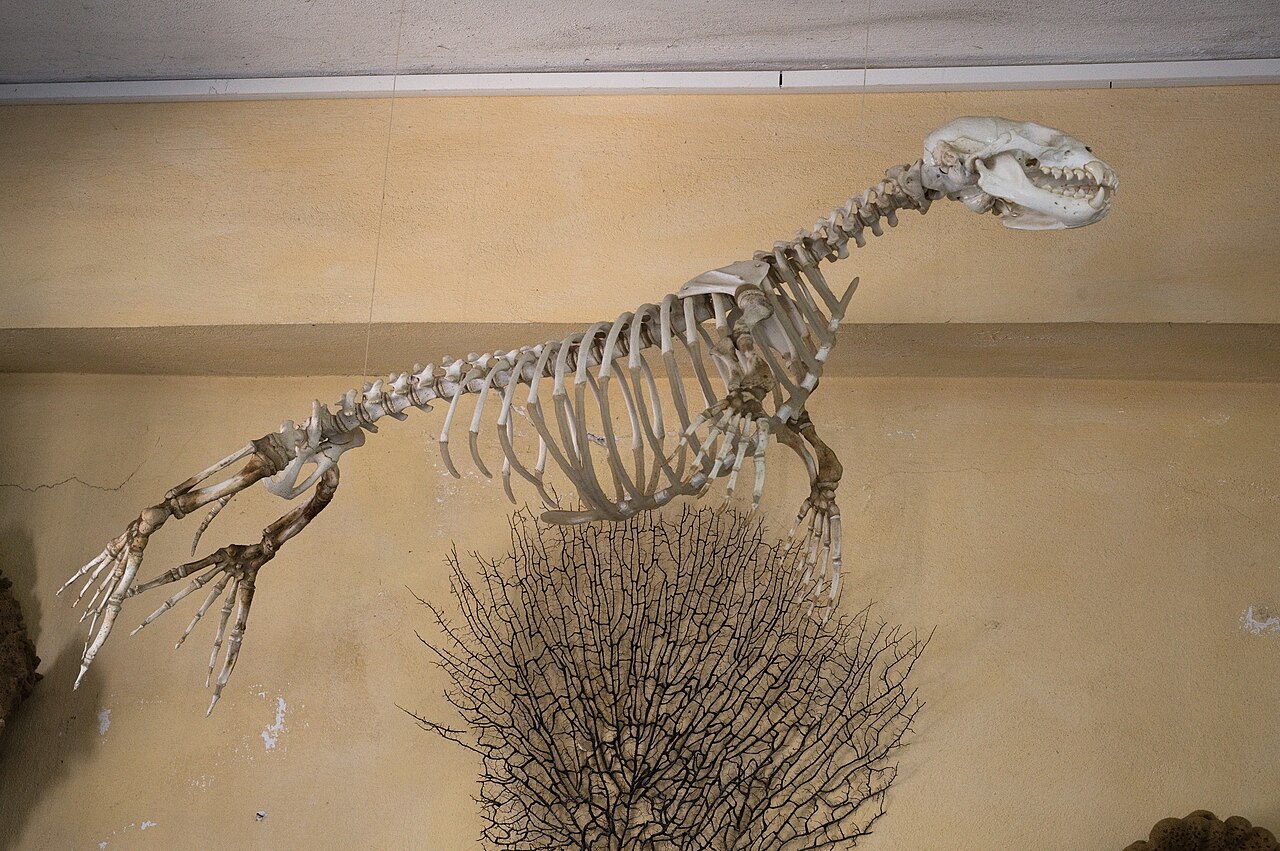
Without its flesh, this skeleton of a Mediterranean monk seal (Monachus monachus), looks rather monstrous. Collection of Museum Historiae Naturalis of Apeiranthos on Naxos (Credit: Zde, via Wikimedia Commons)
Thousands of miles away in Scotland, “Nessie” lurks in the waters of Loch Ness. By many accounts, the story likely originates in the Pict people’s stone carvings found in the area. In 565 CE, a beast was said to have bitten a swimmer, only to have been sent away by St. Columba, who is credited with bringing Christianity to Scotland and is now one of three patron saints of Ireland (along with St. Patrick and St. Brigid).
Interestingly enough, there is a connection between the Naitaka and Nessie. Scottish folklore includes kelpies, shape-shifting water creatures that look like a gray or white horse, and Naitaka is often depicted with a horse’s head. That’s where the similarity ends, however, as the Scottish legend has a dark side. The kelpie is dangerous, tempting humans to take a ride, whereupon their victims are carried off to a watery grave.
Kraken
Seafarers of old faced many challenges, from enormous waves caused by strong storms to weeks of doldrums that left them adrift. Perhaps nothing was as terrifying, however, as the kraken. Originating in Scandinavian folklore, the monstrous creature was likely the product of giant squid sightings. Kraken were feared for their ability to destroy ships and drown sailors fleeing the wreckage. Similar creatures appear in ancient Greek, Caribbean, Japanese, and New Zealander stories.
Mythological Creatures Soaring Through the Air
The ancient Greeks tell us that Icarus took flight with wings held together by wax. When he got too close to the Sun, the wings melted and the young Icaraus, whose father, Daedalus, made the wings so the pair could escape Crete, plummeted to the sea and drowned.
Griffin (Gryphon)
The griffin has the body and tail of a lion and the head and wings of an eagle. Given the esteem in which each creature is held individually (the lion is the king of the beasts while the eagle is the king of the birds), the griffin served as a potent symbol of majesty in various cultures, including ancient Greece and Persia.
Believe it or not, birds are dinosaurs’ closest descendants. Strange but true. (Strange to me, anyway, but I don’t know much about birds. Still less about dinosaurs.)
The fossil records around the Mediterranean and surrounding areas could be the source of various mythological creatures that populate local traditions and migrate to– and mix with – stories from other cultures. For example, Adrienne Mayor draws connections between pre-scientific traditions and natural surroundings.
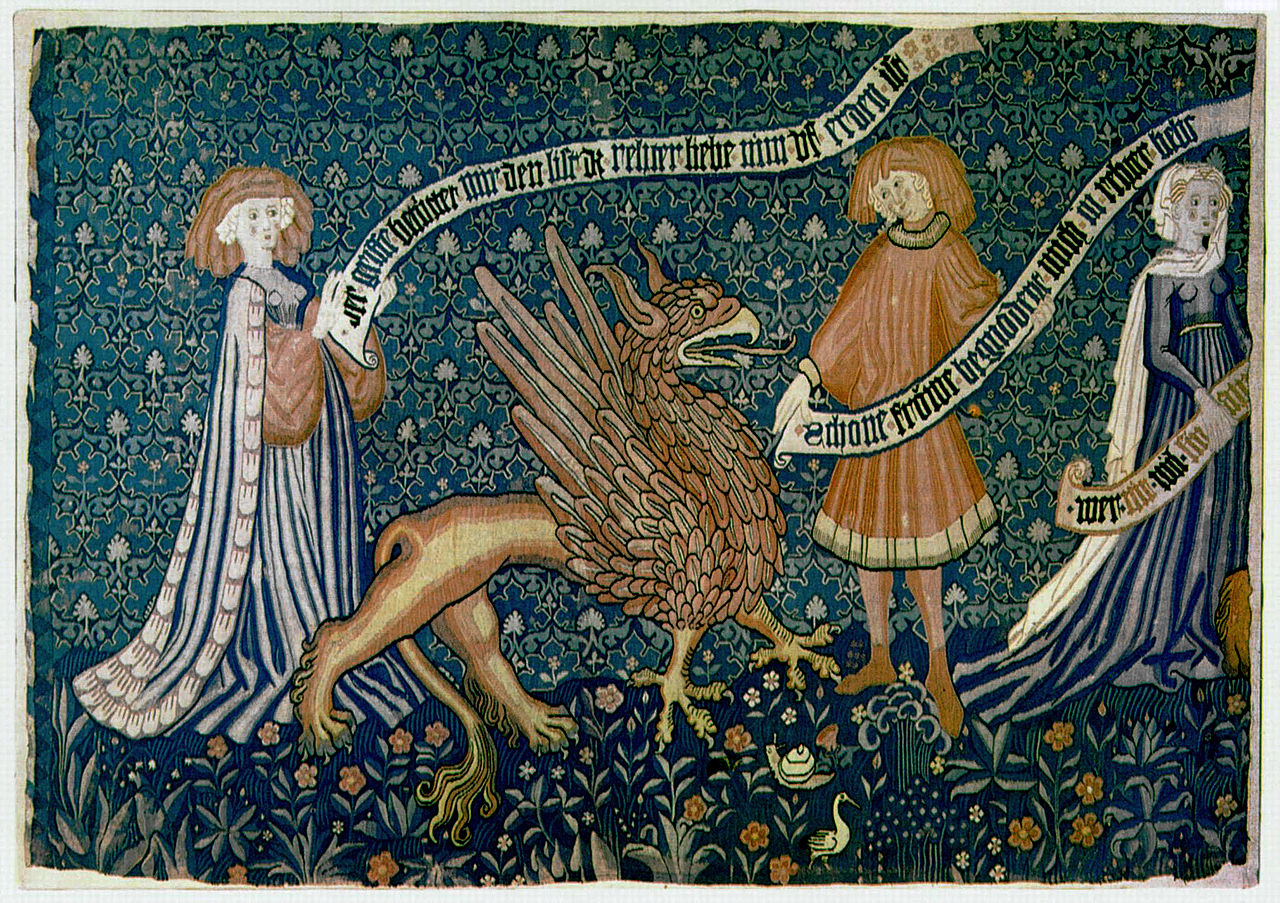
Tapestry of a Griffin (Source: Collection of the Museum of Decorative Arts/The Yorck Project, via Wikipedia)
Pegasus
The winged horse from ancient Greek mythology is the product of Poseidon and the gorgon, Medusa – or more specifically, her neck after Perseus cut off Medusa’s head. Eventually, Pegasus traveled to Mount Olympus, where he resided with the pantheon of gods, delivering thunderbolts to Zeus and creating water springs with the stamp of his hoof. Despite such grotesque beginnings, Pegasus is a symbol of beauty and speed, and an inspiration to those who want to be freed from earthly bounds.
Our Stories, Ourselves
We can learn a lot about ourselves and other cultures by taking seriously the origins of mythological creatures. It’s easy to dismiss such creatures and their stories as mere superstition, as if we are now superior to such small-mindedness. But, despite our enormous repositories of collected knowledge, regardless of our sophisticated understanding of the natural world, today’s cultures are no less susceptible to the lure of mythological creatures than our forebears.
There is much we don’t know about our planet. Only recently, for example, have we begun to get some ideas about what sorts of creatures live in the deepest parts of the ocean.
So, is the legend of any mythical creature that much of a stretch? After all, for as long as there have been humans, there have been attempts to understand the world. That understanding comes in various forms, including stories that explain experience.
Whether through film, television, short stories, novels, or even political ideologies, we create bogeymen and enchanted beings to control and reassure ourselves. After all, the universe is vast and intimidating. There is still so much more we don’t know about it than we have discovered. It’s no wonder that we mere specks of flesh and bone not only desire to feel secure in the face of uncertainty, but also demand explanation. So, perhaps there’s no harm in making something up to help us sleep at night, and telling stories to keep ourselves safe.
Ω
Mia Wood is a philosophy professor at Pierce College in Woodland Hills, California. She is also a MagellanTV staff writer interested in the intersection of philosophy and everything else. Among her relevant publications are essays in Mr. Robot and Philosophy: Beyond Good and Evil Corp (Open Court, 2017), Westworld and Philosophy: Mind Equals Blown (Open Court, 2018), Dave Chappelle and Philosophy: When Keeping It Wrong Gets Real (Open Court, 2021), and Indiana Jones and Philosophy: Why Did It Have to Be Socrates? (Wiley-Blackwell, 2023).
